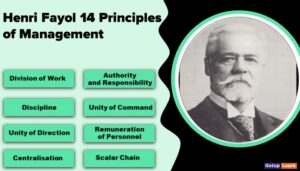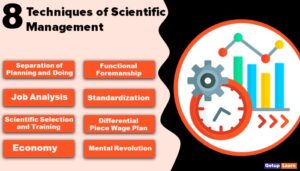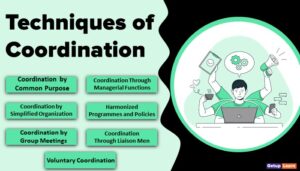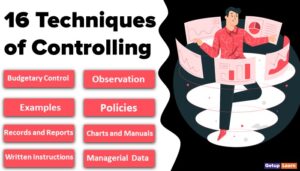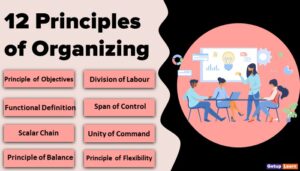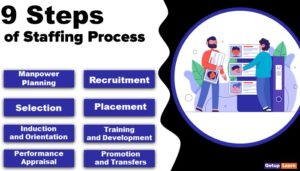Table of Contents
-
1 Steps for an Effective Control System
- 1.1 Tailored to Plans and Positions
- 1.2 Designed to Suit Individual Managers
- 1.3 Point out Exceptions
- 1.4 Control Should be Objective
- 1.5 Control Should be Flexible
- 1.6 Control Should be Economical
- 1.7 Lead to Corrective Action
- 1.8 Active Participation
- 1.9 Suggestive
- 1.10 Competent and Talented Staff
- 2 FAQ Related to the Effective Control System
Steps for an Effective Control System
These are the steps for an effective control system, it must be specially tailored to the specific task or person it is meant to serve:
- Tailored to Plans and Positions
- Designed to Suit Individual Managers
- Point out Exceptions
- Control Should be Objective
- Control Should be Flexible
- Control Should be Economical
- Lead to Corrective Action
- Active Participation
- Suggestive
- Competent and Talented Staff
Tailored to Plans and Positions
Control Should be Tailored to Plans and Positions: Control should reflect the plan it is designed to follow. Managers should have information as to how the plans for which they are responsible are working. Control will differ from department to department, from one individual to another and from business to business.
If control is so designed to serve a specific purpose, it will be more effective. The control must relate to plans. It means that the manager should get quick information whenever there are deviations. The organisational pattern should be reflected in control.
Organisational structure establishes authority and responsibility relationships of individuals in the organisations. The more the relationships are clear and definite, the easier it will be correct deviations from standards.
Designed to Suit Individual Managers
Control Should be Designed to Suit Individual Managers: Control should be designed to suit individual managers and their personalities. The Control system should facilitate the manager in carrying out the control function. Unfortunately, if the manager is unable to understand the control system it is useless.
What is not understood cannot be used at all. Control should be designed for individual personalities also. The requirements as to the kind of information and the manner of its presentation differ from individual to individual.
Some individuals may like to have information in a mathematical model form while others may not prefer such information at all. So it is essential that information and control techniques should be comprehensible to the people who use them.
Point out Exceptions
Control Should Point Out Exceptions: If control is based on the exception principle, it will allow managers to concentrate on vital issues.
Control Should be Objective
Control should be objective and accurate. It is true that management contains many subjective elements but an individual’s work is not a matter of subjective determination. That is why objective standards are to be established.
The objective standard may be quantitative or qualitative. The quantitative standards may be prescribed in terms of cost or man hours or date of job completion. The standard is said to be qualitative when it is based on qualitative concepts.
For example, a training programme which aims at improving the quality of personnel. In both qualitative and quantitative standards, the standard is determinable and verifiable.
Control Should be Flexible
The system of control should be such that it accommodates all changes or failures in plans. To avoid unforeseen situations, when plans are changed control should reflect corresponding changes to remain operative under new conditions.
If plans are to be revised to change their objectives, the system of control should also be adjusted to suit the changed circumstances.
Control Should be Economical
The system of control must be economical. In simple words, it must be worth its cost. Small organisations should go in for a simple system of control because they cannot afford to have a complicated system.
The question of economy is to be decided to take into consideration the importance of the activity, the size of the operation, the expense which might be incurred in the absence of control and the contribution made by the control system. The economy can be ensured by selecting the critical points or areas which require control.
Lead to Corrective Action
Control Should Lead to Corrective Action: An adequate and effective control system should point out the reasons for failure, and the persons responsible for them and assures that corrective action will be taken. If no corrective action is taken through appropriate planning, organising, staffing and directing, controls are not necessary.
Active Participation
All members of the organisation should participate in the effective implementation of the control system. This is only possible when each and every worker in the organisation is asked to take an active part in the discussions and exchange views while selecting the system of control.
Suggestive
The control system should also be suggestive. A system which detects deviations only should also tell the accurate and correct alternative.
A good system can disclose the names of the persons who are involved in deviation but to overcome these it should also suggest corrective action which enables the organisation to achieve the objectives of the business.
Competent and Talented Staff
A system of control can work more effectively if it has talented and competent people working in the organisation. Modern Technology and a new system of operation can be introduced only when an organisation has competent persons to operate them.
A system of control should be adopted after taking into account the calibre, ability and understanding power of the related managers and workers, only then the results will be in favour of the organisation.
What is the step for an effective control system?
The following are the steps for an effective control system:
1. Tailored to Plans and Positions
2. Designed to Suit Individual Managers
3. Point out Exceptions
4. Control Should be Objective
5. Control Should be Flexible
6. Control Should be Economical
7. Lead to Corrective Action
8. Active Participation
9. Suggestive
10. Competent and Talented Staff.


